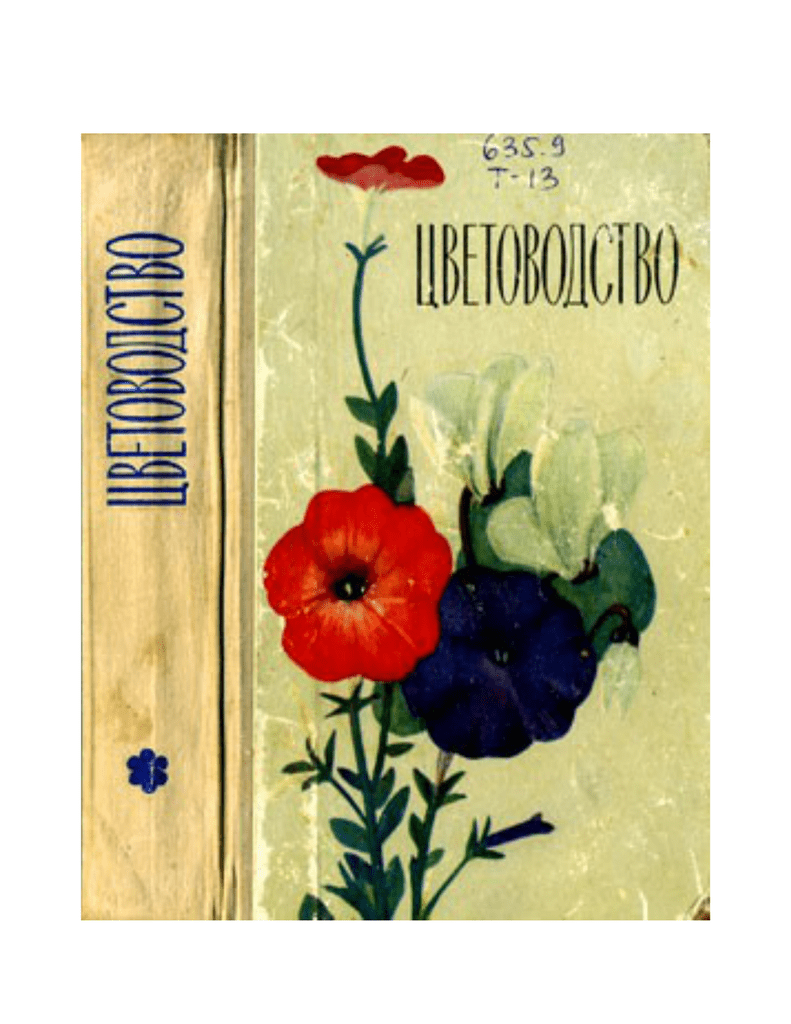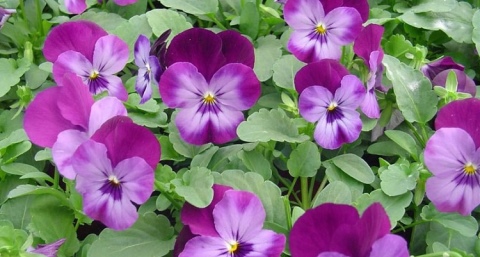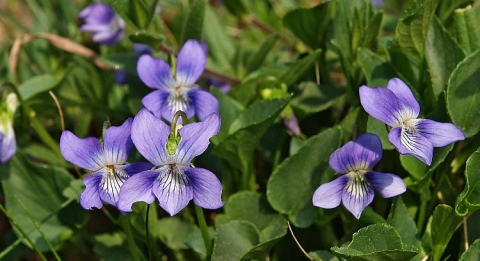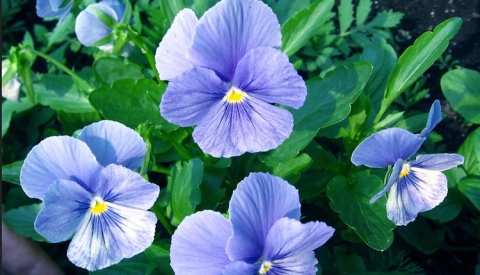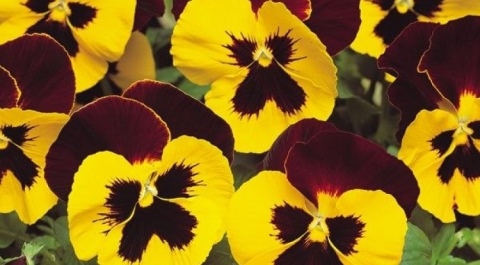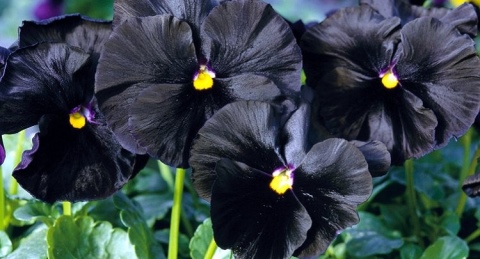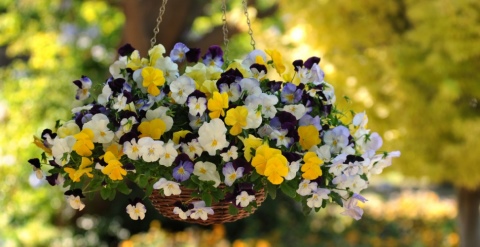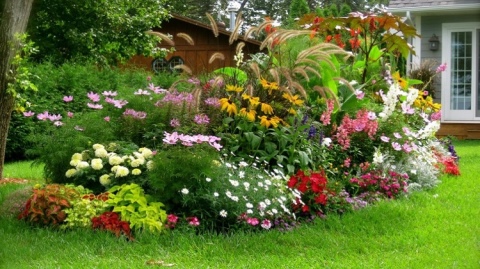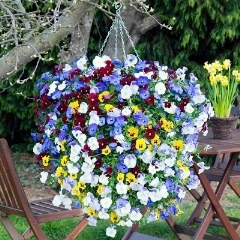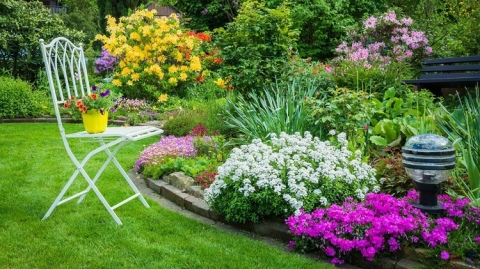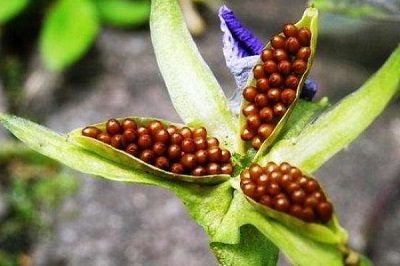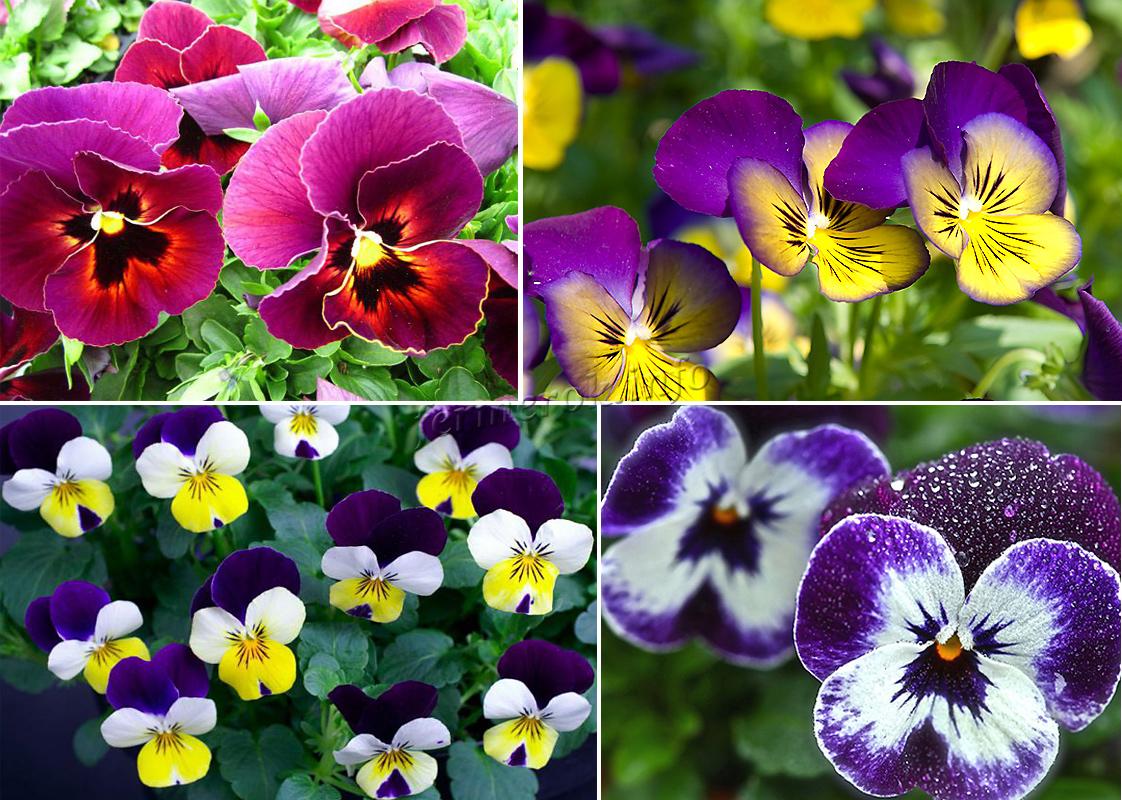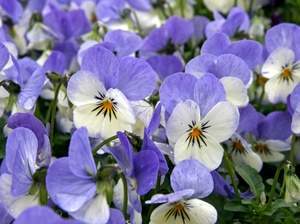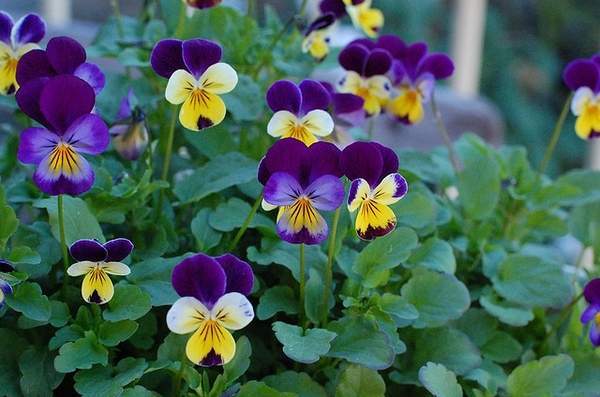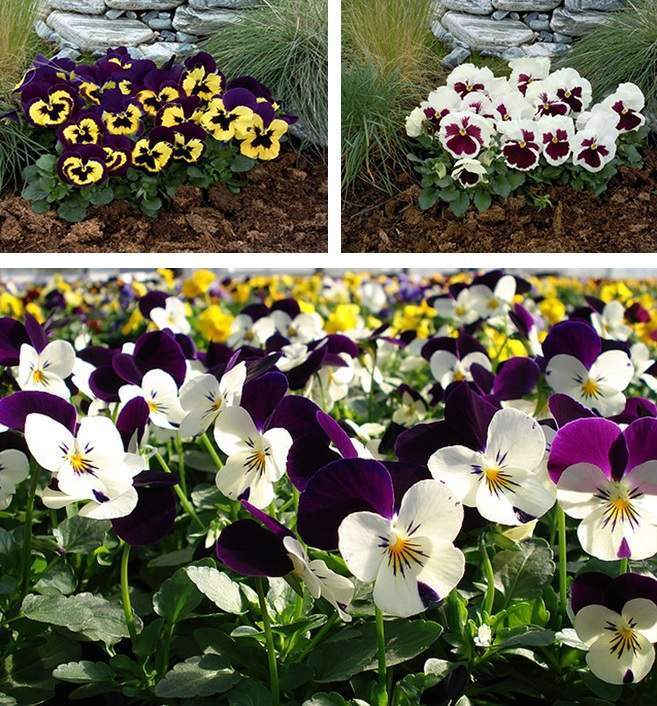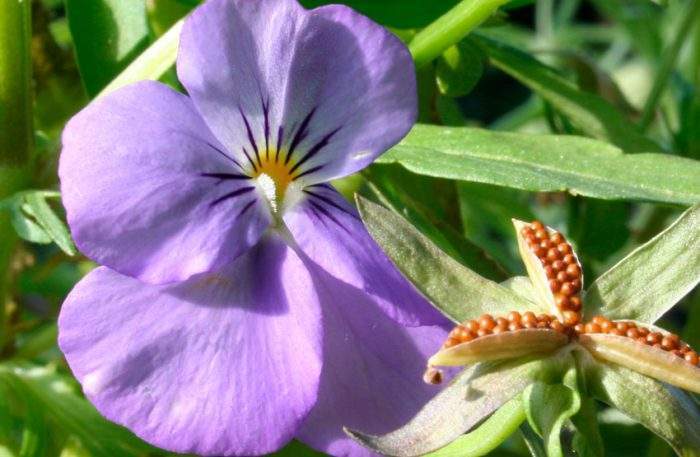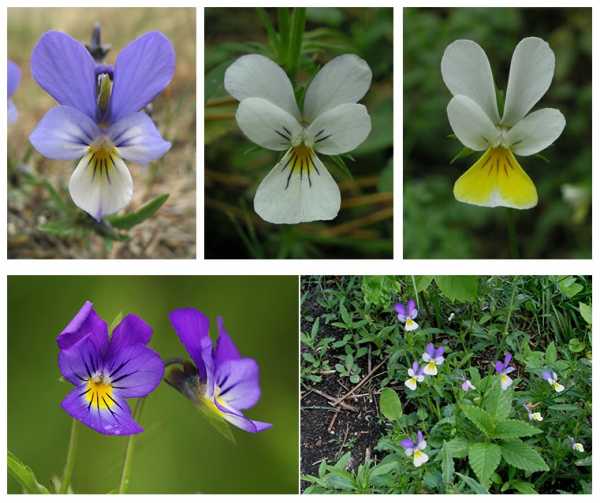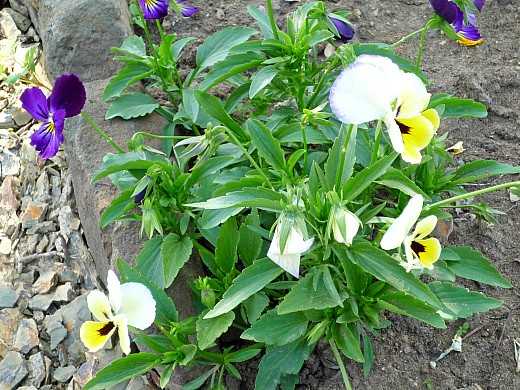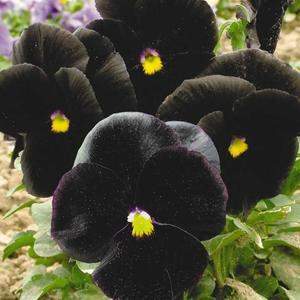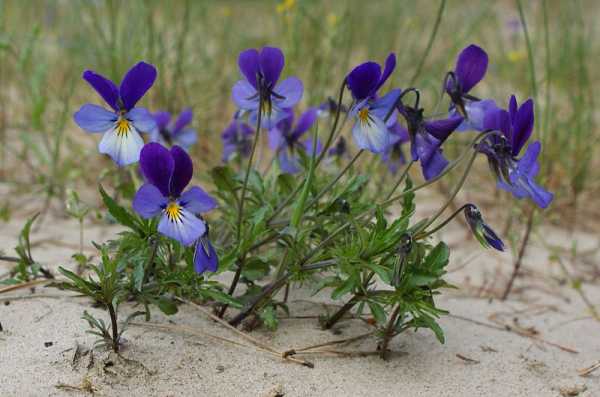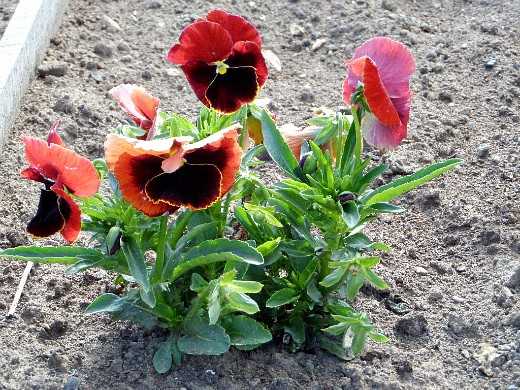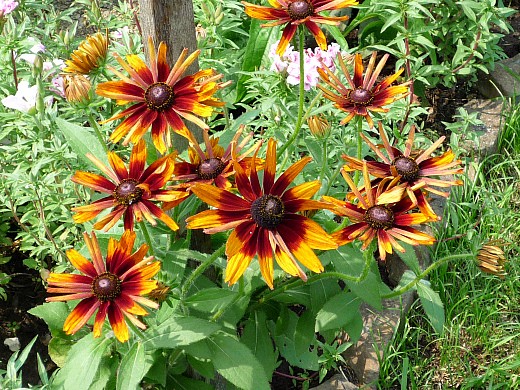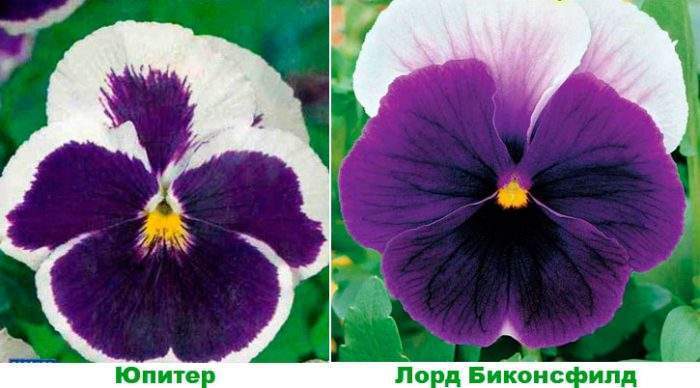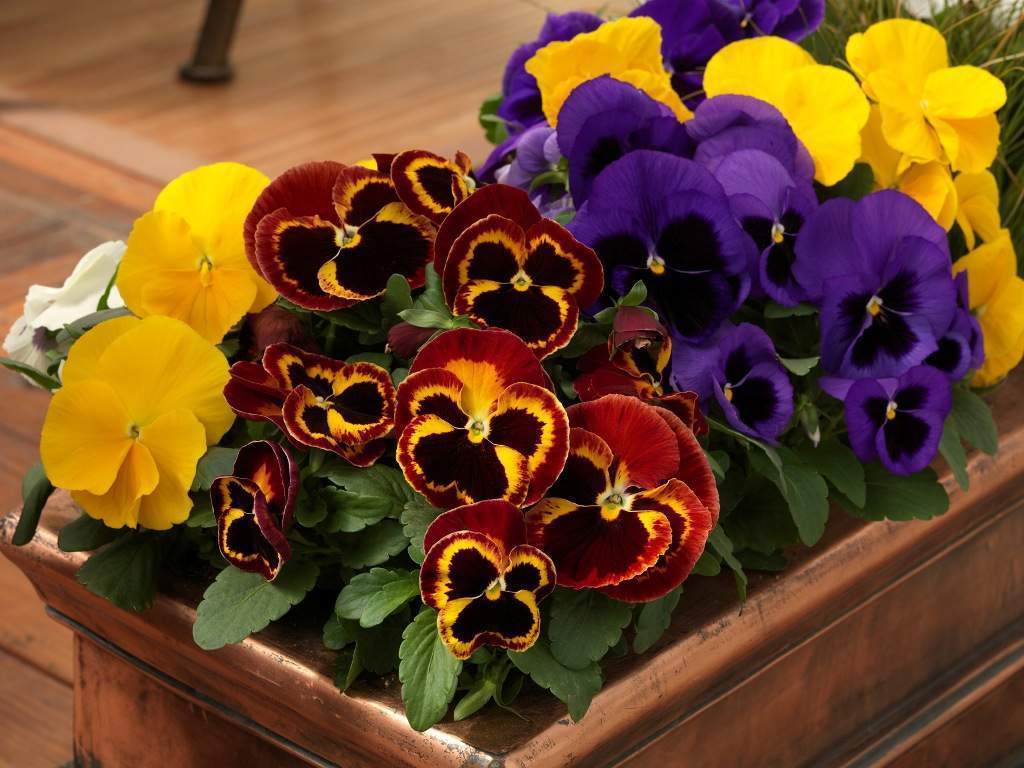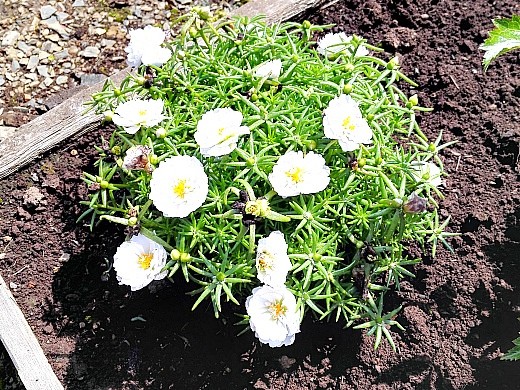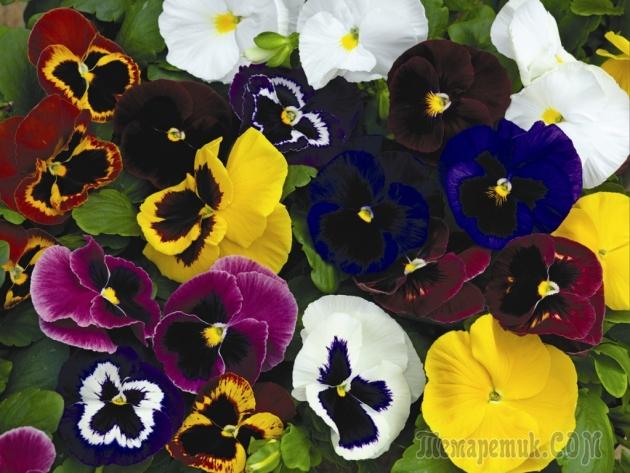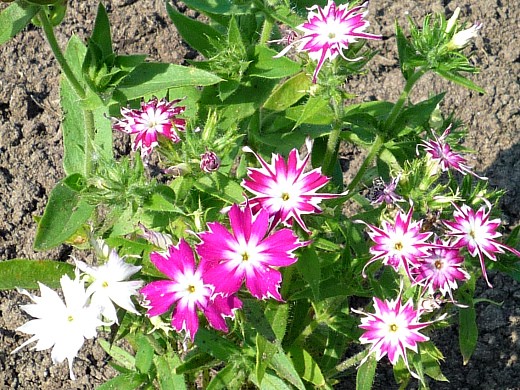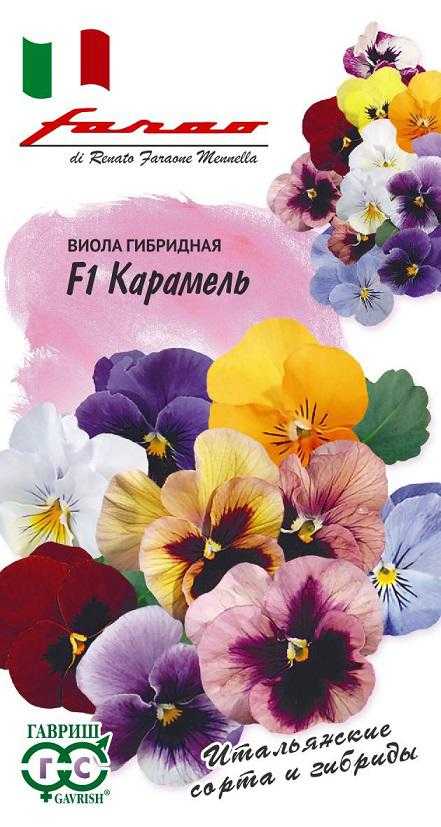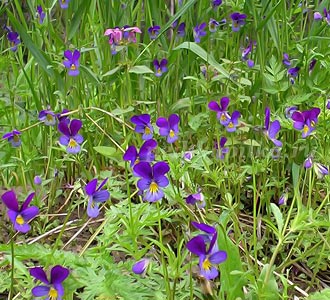Diseases and pests
Viola, which is very easy to plant and care for in the open field, will delight you with colors all summer long. And in order to avoid the difficulties associated with diseases and pests, follow the simple rules of agricultural technology. The most common disease among violets is powdery mildew. It occurs with improper feeding - from an excess of nitrogen. In this case, it is necessary to treat the plant with soda mixed with soap.
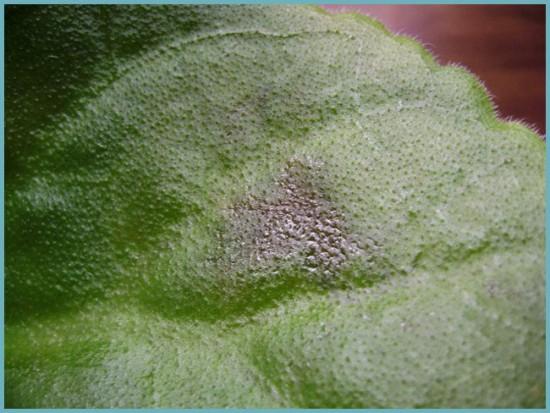 Powdery mildew
Powdery mildew
In addition to powdery mildew, with an excess of moisture, you can encounter problems such as black leg or gray rot. If these diseases are detected, immediately eliminate the diseased bushes until the fungus has spread to the entire garden.
Occasionally, the viola is more spotty, while the leaves dry up, and the plant itself weakens and dies. Such plants must be uprooted and burned, and the remaining perennials must be sprayed with Bordeaux liquid.
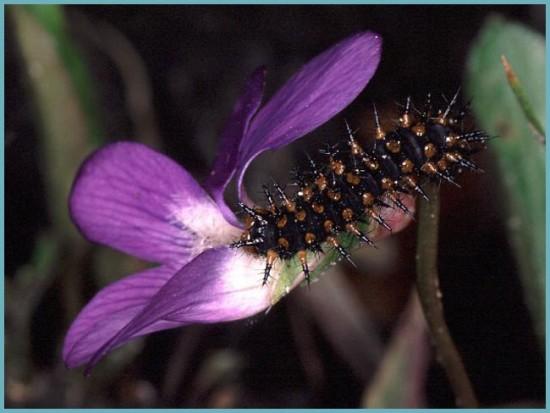 Caterpillar
Caterpillar
Of the pests for viola, caterpillars are dangerous, which eat the leaves of the plant. To combat them, specialized means are used.
Self-seeding of pansies
My garden "anyutki" from year to year give abundant self-seeding. True, in this case, the flowers in plants sometimes turn out to be not as large as in the targeted cultivation of seedlings. But on the other hand, viola seedlings retain varietal characteristics - and this makes me very happy!
In order for the self-seeding "anyutki" not to yield to the plants grown from seedlings in size of flowers, it is necessary to plant densely sprung seedlings in time at the required distance. Usually it is 15-30 cm, depending on the size of the bush inherent in each variety. Then the growing viola seedlings will not oppress each other: they have enough space, light and nutrition for normal development and the presence of full-fledged flowers.
Of course, other conditions must be met for a long and abundant flowering of pansies with the formation of large flowers throughout the season. Regular watering of violets during the heat and drought period with morning spraying, feeding the plants, removing wilting flowers (so as not to waste energy on unnecessary seeds), pruning the shoots that have grown over the summer - all this allows the "anyutki" to bloom successfully and have flowers of a size that matches this variety.
Viola in landscape design
Viola is very friendly and gets along well with other perennials. It goes well with daisies and daffodils.
Small-flowered violets are most expressive when they grow in large numbers. A kind of carpet of green leaves and small flowers of fragrant violets can be made even more spectacular if you add other early flowering crops to it. Woodplants, crocus, doronicum and tiarella are ideal.
White violets will perfectly match with dicentra and red peonies. Very often in landscape design, violets decorate alpine slides along with gorse, armeria and iberis.

Viola looks wonderful in the same flower bed with different plants
Various varieties of viola are used as border plantings, and ground covers are combined with ornamental shrubs and dwarf conifers. On flower beds and mixed flower beds, forget-me-nots, tulips and daisies have become the constant companions of viola. The unpretentiousness of viola and the simplicity of growing it in pots allows you to decorate not only flower beds and gardens, but also terraces, balconies and window sills.
Viola, like all violets, is also distinguished by its medicinal properties. Its decoctions are used for laryngitis, gastritis and many other diseases.And the violet tincture itself is often drunk instead of tea, as it has a very pleasant taste and aroma.
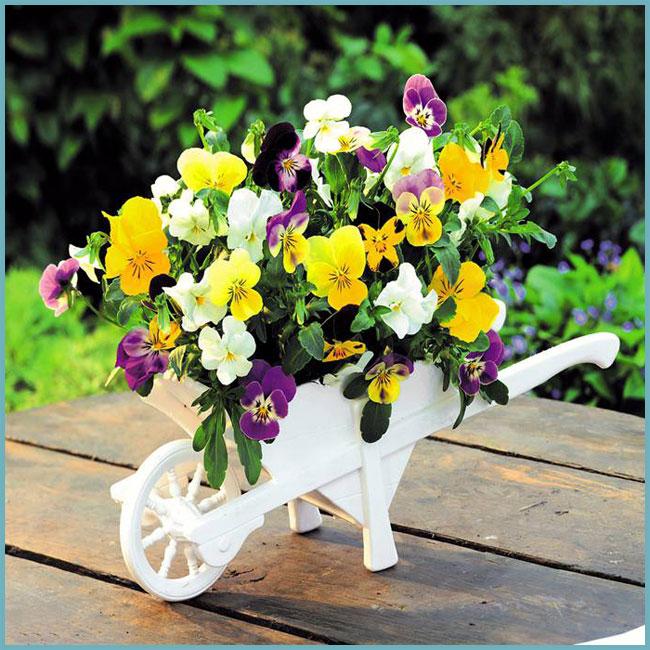
Decorative composition with viola
Viola, as we were able to see, is a simple and unpretentious plant, the cultivation of which will not give you any trouble, subject to the rules of agricultural technology and minimal effort. And bright multi-colored flower beds with violets will delight you with their flowering until the very frost.
Viola - planting and care
One of the first places in floriculture among the earliest and beautifully flowering ornamental plants is occupied by viola, which is popularly also called pansy. This short and abundantly flowering plant is simply amazing with its variety of colors: from pure white to almost black with all kinds of shades of red, yellow and blue. Many amateur flower growers note the special unpretentiousness of this flower, however, like any other plant, viola requires certain knowledge of cultivation and care, which allows you to admire its beauty from early spring to late autumn.
Viola - planting and care
Viola is a rather thermophilic plant, therefore, it is best to plant it in those places where there is most of the sun. True, it should be noted that the flower is not bad enough to tolerate partial shade, but in this case its flowering can be much smaller. As for the soil, loamy, moist, loose and fertile soils are perfect for viola. The timing of viola planting is determined depending on when you want to bloom. Thus, it can be the end of winter when sowing seeds for seedlings, or the beginning of summer when sowing in open ground.
Pansy care is more than simple. The main thing for him is regular and abundant soil moisture, otherwise the plant will simply stop blooming. However, excessive watering also adversely affects the viola, so do not forget about the timely weeding and loosening of the soil, which opens up oxygen access to the roots. In addition, in order to ensure a more abundant and long-lasting flowering, faded flowers should be removed from the plant in time.
It should be noted that viola responds responsively to complex mineral fertilizers, but absolutely does not tolerate organic fertilizers. Top dressing must be carried out directly under the root of the plant once at the beginning of budding and the second at the beginning of flowering. In the event that the viola was planted in open ground in the summer, then for the winter it must be covered with straw or dry leaves, which will protect the delicate roots of the plant from freezing.
Viola propagation
The easiest way to grow this flower is by seed. If you want to bloom in the first year, viola seeds must be planted in boxes in late February - early March. Seedling boxes should be covered with glass or foil and placed in a warm place. During the germination period, the seedling should provide abundant watering and regular loosening of the soil. Literally in two weeks, the first shoots will appear, which then must be dived at a distance of about 5 cm.In May-June, when the threat of spring frosts has probably passed, the viola is planted in the open ground at a distance of 10-15 cm.
Viola is planted with seeds in open ground in June-July, and in August the plant is transplanted to a permanent place. In this case, the viola will bloom only next year in early spring, but many experienced gardeners say that the viola grown in this way surpasses its counterparts grown from seedlings in terms of the duration and splendor of flowering.
In addition, the reproduction of viola is possible by spring self-sowing, however, at the same time, the flowers are pollinated and lose their species differences. Viola propagation is also possible by grafting. To do this, at the end of May, they are planted in moist soil in a darkened place
Viola diseases
Viola, with improper care, may develop such diseases as black leg, stem and root rot, downy mildew, leaf spot, aphids. However, all this can be safely avoided if water is not allowed to stagnate at the plant roots.
.
Care
It should be noted right away that every 3 years Viola must be transplanted. In the process of transplanting, the bushes should be divided among themselves so that the plant does not grow much, and the flowers do not become smaller, losing their decorative effect.
Many Viol varieties reproduce well by cuttings.
Of the features of care, it is important to maintain the soil in a loose state and in sufficient moisture. If the climate is not very hot, then additional watering is not necessary.
In hot weather, you will have to water extra
Loosening is necessary due to the shallow root system. It only grows up to 15-20 centimeters in depth. Weeds are sure to get rid of so that the flower could receive all the necessary substances from the soil.
Collection and storage of seeds
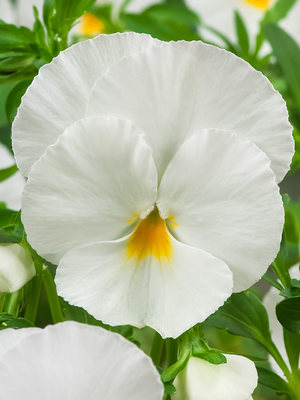 Viola seeds appear in bolls on peduncles after flowering. When they ripen, they turn brown and are very small in size. The main thing when collecting is not to miss the time when it is time to collect the boxes. Otherwise, they open, the seeds spill out on the ground, and next year new plants will appear in this place, which will grow in a chaotic manner.
Viola seeds appear in bolls on peduncles after flowering. When they ripen, they turn brown and are very small in size. The main thing when collecting is not to miss the time when it is time to collect the boxes. Otherwise, they open, the seeds spill out on the ground, and next year new plants will appear in this place, which will grow in a chaotic manner.
The boxes must be collected at the time when they are pulled up. It is best to cut them off with scissors or a sharp knife, after which their seeds must be removed and placed on a cotton cloth in order for them to dry well. The dried seed is placed in a cellar or refrigerator until the next planting season.
If you follow all these rules, then the garden or balcony will constantly be decorated with cute pansies. Varieties with new qualities appear regularly, so the flower garden can be constantly enlarged.
Conclusion
- For many centuries Viola remains a famous and popular flower. And thanks to the work done by breeders, we can observe new species and hybrids, for example, Viola Vitrokka.
- Flowers that grow in natural conditions do not differ in the great brightness of inflorescences, but new modern varieties simply amaze with the brightness of colors. There are a lot of classifications today.
- The variety of shapes, colors and sizes allows you to grow Viola both as a single solo and in group plantings. Experienced growers advise planting several varieties at once for greater effectiveness.


